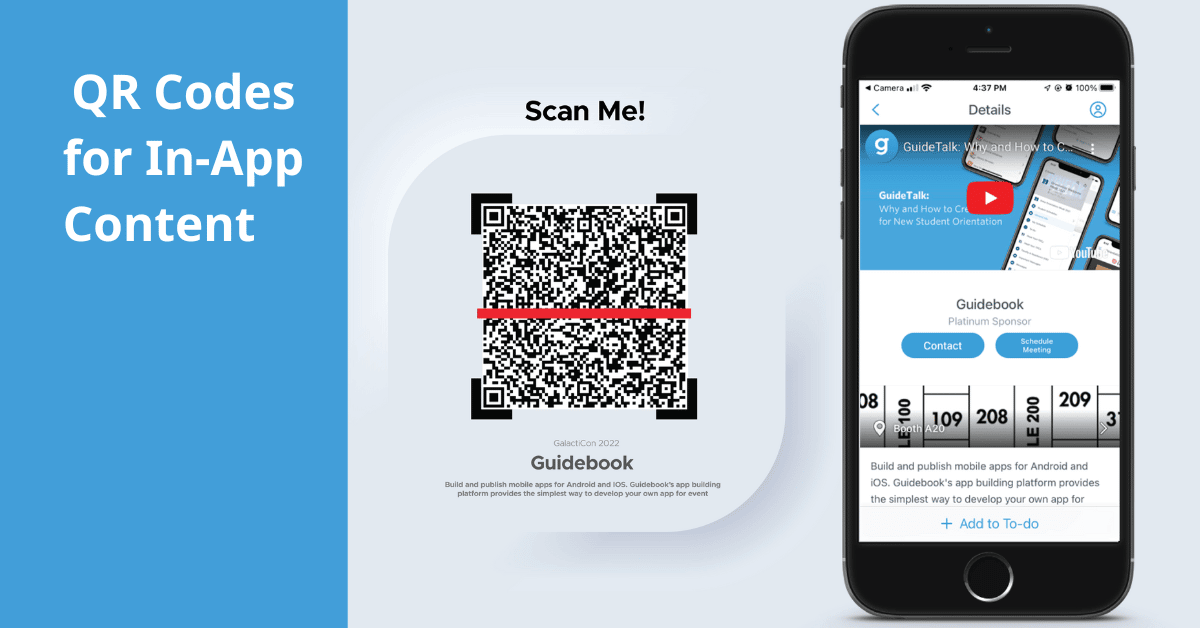Leaderboards and Rewards: How Gamification Apps for Business Can Drive Success
Humans have been playing games for thousands of years. We all want to win competitions. We want to get the most from our strengths and improve upon our weaknesses. So, with the help of smartphones, companies are using gamification apps to get the most from their employees.
Getting employees to compete in small ways pushes them to be more productive. But you also want your people to collaborate and effectively work together. Well-designed business gamification apps will achieve these objectives for you.
Here, we’ll look at the many uses of gamification apps in the workplace. We’ll look at how gamification apps can improve sales team performance, employee training, customer loyalty programs, and more. And we’ll share some features you can use for gamification when you create an app with Guidebook. gamification apps for businesses.

Understanding Gamification in the Workplace
So, what do competition and collaboration have in common? Engagement. And gamification is one of the easiest ways to engage teams day to day.
What are Gamification Apps?
In a football game, both teams know exactly what to do if they want to satisfy their fans — score more points than the other team. The same is true of game show contestants. Companies have used Gamification apps for events such as seminars and conventions, for years now. Here, we’ll focus primarily on a new use for gamification apps: gamification apps for your business operations.
Gamification apps allow your employees the same level of clarity a sports team has — the person with the most points makes the best impression on the company and will probably be the next person promoted to a higher salary. Okay, that was a bit of a stretch. Still, the point is you can enhance employee engagement and productivity when you provide gamification and incentives like bonuses or extra vacation days.
Key Features of Gamification Apps
To add gamification to your app, you’ll need the right features. Guidebook’s drop and drag app builder has several features to encourage engagement and support gamification,
- Live polls
- Leaderboard
- Surveys and forms
- Profiles and networking
- Social discussion feeds
- Private messaging/chat
- Photo sharing
- Document and presentation hosting
- Instant content updates
- Targeted push notifications
The best gamification features are the points, badges, and leaderboards. These features allow each employee to see how they’re doing compared to their colleagues. With instant content updates, leaderboards show real-time information.
Through private messaging, you can give a struggling employee pointers on how they can improve their game. You may suggest a document or presentation for an employee to review. With targeted push notifications, your staff will know instantly when they receive a new reward or badge.

What are some examples of gamification in business?
Customer loyalty programs are a perfect match for business gamification. In Sales, pay is often based on performance through commissions. This makes Sales an ideal team for gamification. Many companies also see the benefit of gamification in employee training.
Sales Team Performance
Sales is a competitive field. Everyone wants to be the top salesperson — especially since much of their pay depends on commissions. An app with a leaderboard could be used to show the sales staff making the most sales, completing the most cold calls, and more.
Employee Training and Development
With a Guidebook app, you can create quizzes using the Forms feature. Reinforce employee training with quizzes to help them remember more of what they’ve learned. With documents and presentations stored within the app, employees can always review the information they need. And with chat, your people can ask others within your company if they can’t find the answer to a question.
Customer Loyalty Programs
Remember when sandwich shops would give you a punch card, and once you received ten punched holes, you would get a free sandwich? That was so “20th Century.” But Elaine’s character on Seinfeld continued to eat at the fictional Atomic Subs because she had to get that free sandwich.
In modern times, most national restaurant chains harness the same drive Elaine had by gamifying their customer loyalty programs through apps. They offer rewards such as a free burger or perks such as exclusive deals only for app users. Gas stations used gamified rewards apps too. Who doesn’t want 10 cents off per gallon with today’s gas prices when the only thing that’s required is to use the app?
Customer loyalty gamified apps aren’t limited to fast-food and gas stations. You can create these apps for any business. All that’s required is a little imagination and careful analysis. Guidebook makes it simple for anyone to create the app with its drop-and-drag templates.

A Real-World Gamification Success Story
Wondering how gamification works in the real world? Let’s look at an example. Aggreko used their Guidebook app for employee training. They included features to encourage engagement and make learning fun.
Aggreko Employee Training
By implementing a mobile app for their corporate training, Aggreko was able to digitize their classroom and evolve from a traditional training model to an interactive, engaging learning experience. A critical factor in Aggreko’s decision to go mobile was employee connection, communication, and retention
The app supports Aggreko’s goal to empower everyone on their own learning journey and makes it easier than ever to find an expert and to be an expert. Their people are already seeing a change in how employees connect, communicate, and learn.
“This is an exciting time of digital transformation. Employees who go through courses with the app want more, asking for every piece of content to be digital,” said Davis. “They see we take their development seriously, and that has a profound impact on retention.
Read the case study to learn how Aggreko used the Guidebook mobile app platform to revitalize their employee training across multiple countries.

Add Gamification with the QR Code Scavenger Hunt
In this game, participants search for QR codes that have been placed around the venue, building, or campus. If your event is virtual, you can place QR codes in presentations or websites your users will access.
When a participant finds a code, they’ll scan it using the QR Scanner module in the game folder. Scanning the code will take them to the Game Progress page and fill in part of the phrase or image. A participant completes the game by finding and scanning all of the codes, and in doing so, will reveal the entire image or phrase. Optionally, the game can display a link below the completed phrase or image that, when tapped, takes participants to a Guidebook form or external website.
The QR game works best if the players receive a small reward or entry into a larger contest for completing the game. The competitive aspect works to make the game fun, and the potential reward provides motivation to complete the game.
Watch this video to see how a QR Code Scavenger Hunt works for an end-user.
Planning Your QR Game
There are many creative ways to implement QR games, rather than the traditional method of having QR codes in various locations at your venue. Presenters can add QR codes to their presentations, or sponsors can add QR codes to their websites. Just note that QR codes need to be of reasonable size to scan them from a presentation or computer screen. You can use QR codes in different colors, and users need to scan one of each color—you’ll want to have a way to edit images so you can color the codes. Have participants send an admin a photo or complete a task—or use the Photo Album feature—to receive a code.
If your game is too complicated or there are too many codes to scan, players may feel frustrated that they can’t win. Players will complete your game immediately and won’t be challenged to move around the venue if your game is too easy. We recommend no more than twelve QR codes in a game. Having a nice prize or drawing is a good incentive for users to participate.
How to measure success and make informed decisions
You’re probably thinking, “For gamification, doesn’t there need to be a way for management to see the key performance indicators?” Of course, you need something to track stats and make reporting easy. Your app can do that. Measure how well the game meets your company objectives with metrics tracked within your app.
Analytics and Continuous Improvement
Guidebook has several analytical features you can use to improve continuously, such as:
- Usage metrics
- Activity tracking
- Feedback
- Engagement metrics
Usage metrics help you see how much your staff uses your gamified app. How are your employees using the app throughout their workday? Find out with your app. Track user activity to see what gamification features are resonating with your team. You could even learn how much time is your sales staff bogged down with administrative work instead of making new sales. Is your remote staff meeting the productivity goals you have for them? Are you gaining the expected revenues from your customer loyalty program? The answers to these questions will be shown through the activity-tracking feature.

Gamify your way to scoring business goals with Guidebook
Gamification apps for business will optimize your company in ways that weren’t possible just a few years ago. Unlike many new technologies, you don’t have to spend a fortune to use the same gamification system the largest corporations use. Organizations like Amazon, Coca-Cola, GitHub, the University of Oregon, and the YMCA of the Rockies use Guidebook.
Are you ready to take your business to the next level? Then, let’s get started. We would love to hear from you. Request a demo with Guidebook today!


